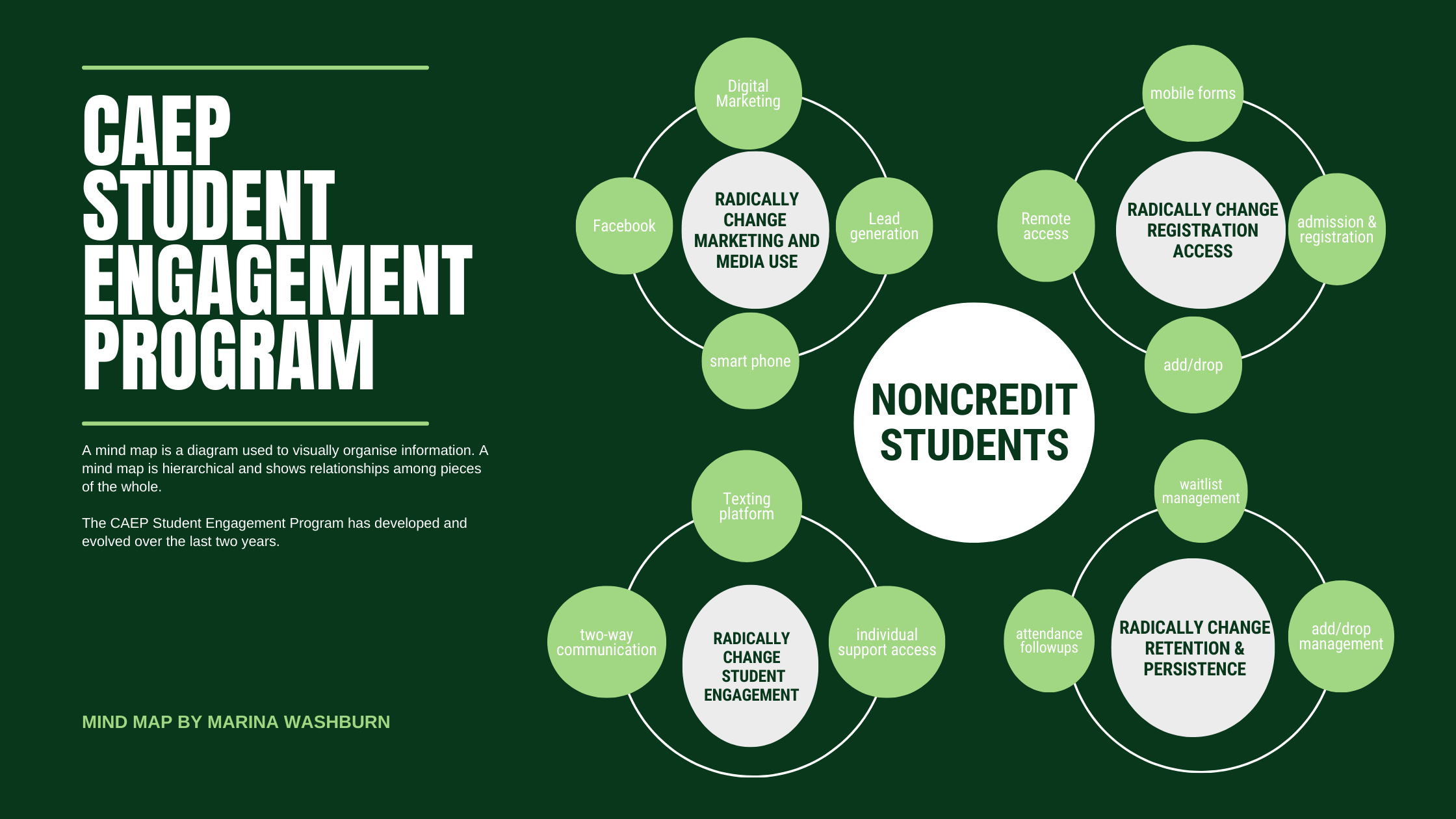CAEP Student Engagement Program – Eliminating Access Barriers With Texting and Mobile Technology
Submitted By: Marina Washburn
AEBG Staff/Partner
Website: https://www.hancockcollege.edu/communityed/index.php
Type of Practice: Program Development / Curriculum / Classroom
Program Area(s): ABE / ASE, ESL / EL Civics / Citizenship, CTE / Workforce Prep / Pre-apprenticeship
Region: Northern California
Consortia Involved: Allan Hancock Community College Consortium
Program Overview
In the fall of 2020, a two-way, bilingual texting platform was launched, intentionally integrated with our student data to address barriers to entry and communication.
The Program of Practice
Data backed observations at Allan Hancock College, determined that the admission process, as well as communication practices, presented a significant barrier to entry due to language and digital literacy barriers present for 78% of students served by noncredit programs.
The college’s implementation of the CCCapply admission process in 2016 negatively impacted access, creating a process requiring staff to support every student in creating email address to complete the required web-based CCCApply admission process prior to entry, followed by portal access to register. In addition, we found email not to be a commonly utilized technology in our noncredit community of students, giving way to low student engagement and communication.
The Response
To address these challenges, a comprehensive program was developed to remove barriers to entry and communication. In the fall of 2020, a two-way, bilingual texting platform was launched, intentionally integrated with our student data. The texting platform allowed us to engage new, returning, and prospective students in a familiar and comfortable format, via text. Student engagement grew from <1% in email/phone to over 52% via text. Giving way to supporting and connecting with students in an entirely new way. Coupled with the launch of the texting platform we developed a simple admission/registration process allowing students to click a link from a text to register using their smart-phones in their language of preference.
To manage and continue to expand the new level of student engagement, we wanted to focus on retention and persistence, thus hiring a team of navigators who connect with, respond to and guide students. These combined efforts resulted in an overwhelming level of engagement and retention, necessitating the development of waitlist systems to manage the influx of new and returning students.
The Unique Features of the Program
The integration of student data with the texting platform along with capturing language of preference allows messaging to be tailored, customized and targeted.
Mobile accessible applications eliminate language and digital literacy barriers.
A support system of trusted navigators that demystify the college student experience. They become the go-to for any questions or concerns a student may have.
We are meeting students where they are, where they live and how they communicate. We eliminate these barriers so they can focus on being students. We used human design to develop systems that tailor to the audience while addressing the needs of the institution.
The Outcome
We created systems that remove barriers, increase student participation, retention, and engagement across all noncredit programs. These systems have reduced in-person registrations, minimizing lines and phone calls at the office. Enrollment for the upcoming terms will typically fill to 85% within the first-week registration opens, months prior to class start, minimizing class cancellations. In addition, with the use of text reminders, the first week of class attendance saw a 5% increase when compared to other terms. We now manage a waitlist system with hundreds of students for our most heavily impacted programs as the program’s demand increases with new and returning students. Tracking the program’s demand has allowed us to advocate for offering additional sessions and hiring additional instructors. In fall of 2022, we saw a waitlist of over 550 students.

